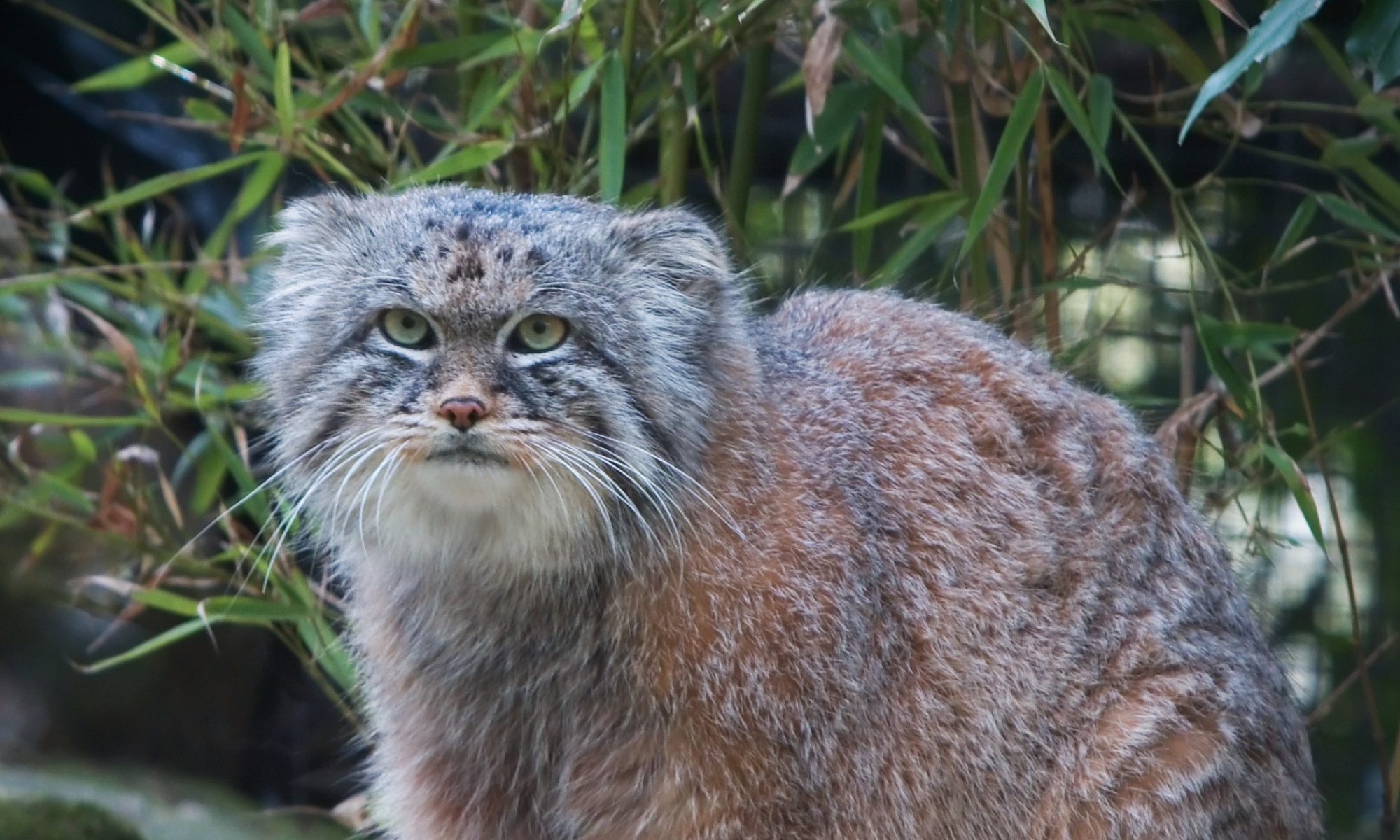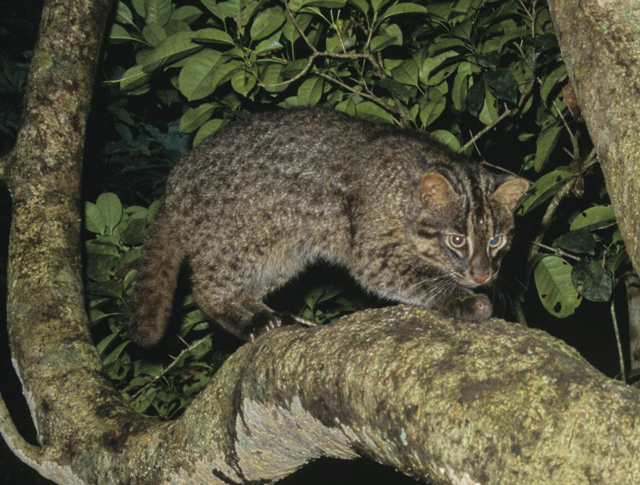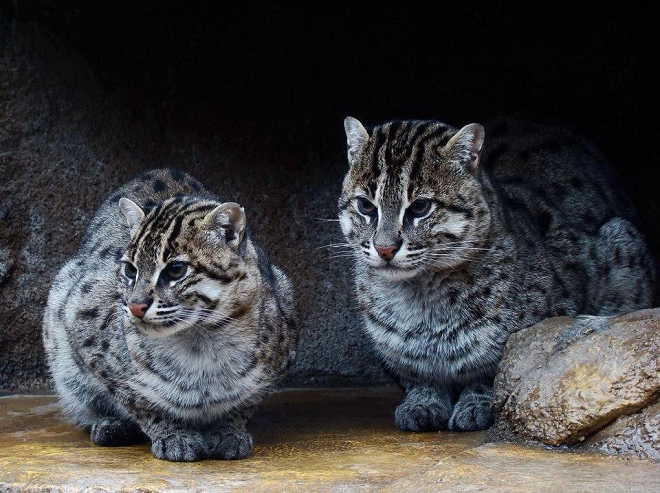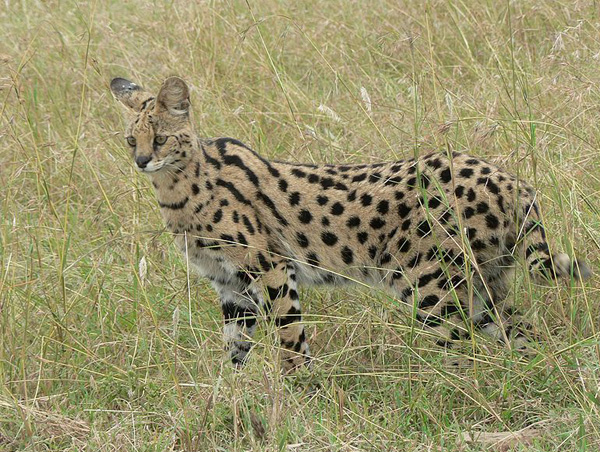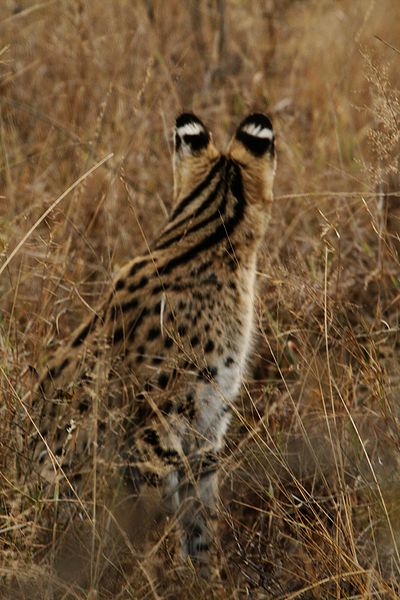Cat of the Month ~ July 2017
The Iriomote cat is probably a subspecies of the leopard cat or may be the sole member of an entirely separate genus (Mayailurus Iriomotensis)….who knows!
Iriomote live only on the small Japanese island of Iriomote or ‘Iriomote-jima’ and nowhere else on the planet. The island lies 200 kilometers to the east of Taiwan and has a total area of 113 square miles (292 sq km).
Iriomote cats have a dark grey and brown fur colour with lighter hair on the belly and insides of the limbs. The sides are marked with rows of dark brown spots, which often form into stripes around the neck and legs. It has been observed that the Iriomote cat has a relatively elongate and low-slung build, with short legs. The tail is dark brown (with a darker spots pattern on the back sides) whilst the underside of the tail is solid dark brown as is the very tip of the tail. It has rounded ears with black fur spread along the edges. Adult Iriomote cats have a white spot on the back of each ear, much like those found on tigers’ ears. Young Iriomote cats do not have these marks, and even as adults the spots will not be as white as those seen on other leopard cat subspecies. Its eyes are a light amber shade and there are two dark brown spots on each cheek.
Habitat
Iriomote cats have been seen in wooded mountainous areas, open country and even mangrove swamps and beaches along the island shores. They will though also climb trees, wade into water and even swim. It is thought to spend most of its time alone and, like many wild cats, is mostly nocturnal and especially active during twilight hours. During the daytime, they tend to sleep in tree hollows or in caves (out of the heat of the day and no doubt away from human disturbance). To mark territory they will urinate and defecate on rocks, tree stumps and bushes. Their home ranges vary from 1 to 7 sq km (or 0.38 to 2.7 sq miles) in area.
Food
Recent studies into the cat’s diet reveal that its prey includes animals such as fruit bats, birds, wild pig, rodents, reptiles, amphibians, and crab. The cat also can swim well and will catch fish if the opportunity presents. It has been shown that these cats prefer areas near rivers, forest edges, and places with low humidity.
Iriomote cats are carnivorous and prey on various mammals, birds, reptiles, amphibians, fish, and crustaceans. They typically ingest 400–600 gramms (0.88–1.32 lb) of food a day. Other wild cats primarily hunt small mammals, such as rodents and rabbits, but because there are no other carnivores to compete with the Iriomote cat on the island, there is no need for them to isolate themselves from the various habitats and food sources that are available. Thus, their diet is quite varied.
Mammalian prey includes black rats, Ryukyu flying foxes and young Ryukyu wild boar. Their prey also includes a wide range of birds, such as the spot-billed duck, slaty-legged crake, Eurasian scops-owl, pale thrush, and white-breasted waterhen. Reptiles include various types of snakes and Kishinoue’s giant skink. They are also known to hunt Sakishima rice frogs, yellow-spotted crickets and crabs. As their hunting grounds tend to be in swamps or on shores, they sometimes swim and dive to catch water birds, fish, and freshwater prawns.
When eating birds that are larger than a dusky thrush, most types of cats will pluck the feathers and then eat it, but the Iriomote cat will eat even large birds whole without removing the feathers. “How big is a dusky thrush Ed?”….no idea Osc… let me just look that up.
Since the Iriomote cat mainly inhabits the lowland coastal regions of the island, the cat is in direct conflict with the island’s human population. Recent estimates have put the total Iriomote cat population to be as low as 100 individuals. The threats to this rare cat are loss of habitat, growing competition from the island’s feral cat population, and tourism.
Names
The Iriomote cat (Prionailurus bengalensis iriomotensis) was discovered in 1965 by Yukio Togawa (戸川幸夫 Togawa Yukio), an author who specialized in works about animals. In 1967, it was first described by Yoshinori Imaizumi, director of the zoological department of the National Museum of Nature and Science in Tokyo. However before its scientific discovery, the Iriomote cat was known locally by various beautiful names. In Japanese, the cat is called Iriomote-yamaneko (西表山猫, “Iriomote mountain cat”). In local dialects of the Yaeyama language, it is known as yamamayaa (ヤママヤー, “the cat in the mountain”), yamapikaryaa (ヤマピカリャー, “that which shines on the mountain”), and meepisukaryaa (メーピスカリャー, “that which has flashing eyes”).
This small cat has been listed as critically endangered on the IUCN Red List since 2008, as the only population comprises fewer than 250 adult individuals and is considered declining. As of 2007, there were an estimated 100–109 individuals remaining. It is certainly one of the rarest of cats, with its entire population contained on one Japanese island.
Source: From Wikipedia & others
